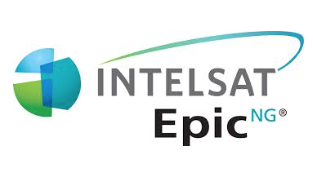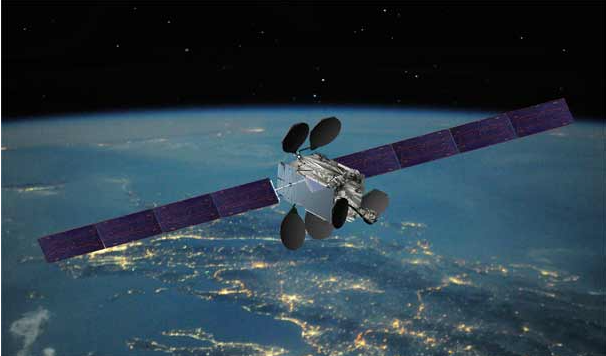
So much of our regular daily lives relies on space communications, bank ATMs and gas stations, air traffic safety, smartphones and GPS just to name a few, without space the world economy, in many ways, would digress at least 50 years.
So many of the services we all depend on today are powered by space communications. Just think about it—bank ATMs and gas stations, air traffic safety, smartphones and GPS just to name a few. Without space the world economy, in many ways, turns back half a century in time.

Artist’s impression of an Intelsat EpicNG satellite.
For some time now, we have been hearing from top folks at the Pentagon that space is no longer the sanctuary it once was as it becomes more and more congested and contested. But there are many things this country and others can do to ensure space connectivity.
In a recent panel at the 2016 Defense One Summit, Rear Admiral Brian Brown, deputy commander of the Joint Functional Component Command for Space, DoD Deputy Undersecretary (Space) Winston Beauchamp and Scott Szymanski, mission manager for space with the National Geospatial-Intelligence Agency, offered their views on the best path forward in space.
For now, the goal is to have sufficient resilience to assure that satellite capability survives jamming and other challenges in orbit such as space debris. Beauchamp outlined ideas being considered to build satellite resilience, singling out commercial satellite communications as a primary component of an eventual government plan.
“[Commercial companies are] building digital payloads. They’re building steerable beams … around interference sources. They’re going away from large beams to multiple spot beams that are steerable—all of which is helpful for their business case, but it’s also a great enabler for government use in the case of jamming,” Beauchamp said. “So it’s a real convergence of industrial technology trends and government needs.”
The capabilities he outlined will be on the Intelsat EpicNG family of high throughput satellites. Beauchamp said that the government should make commercial satellite capability “a baseline, not an augmentation” to defense.
To Beauchamp’s suggestion, Brown added advancing space situational awareness—a product of the Joint Interagency Combined Space Operations Center, which has moved from experimental to operational in less than a year, and the Commercial Integration Cell.
Ultimately, the goal of resilience is to make satellites more resilient in orbit and, therefore, an even more reliable part of the overall communications infrastructure. “If (potential adversaries) do their math right, they’ll look at it and say, ‘Perhaps I can’t achieve the goals that I want, to set out to deny space capability to the US and its allies. And if that’s the case … maybe it’s not a good idea to start,” Beauchamp said.
The future involves international negotiation, analogous to the test ban treaties put in place in the 1950s and 60s following nuclear capability proliferation after Hiroshima and Nagasaki.
International regulation talks should include the space industry on which the world is so dependent. Current space conduct is defined by the Outer Space Treaty of 1967.
“(It’s) the international equivalent of the parents telling the kids in the back of the station wagon, ‘Don’t touch each other, and don’t break your toys’,” Beauchamp said. “It’s limited in what it can achieve. That’s fine when the only people in space were governments, and when the number of assets in space was relatively small.
“What we need to do now is to acknowledge the fact that there are tremendous commercial opportunities in space, that more and more operators are launching systems into space … We need to define rules of the road, of norms and behaviors, so we don’t have very popular orbits get congested with debris.”
The United States is not the only nation with a stake in space. The rest of the world has a similar incentive to keep space safe for all. Leveraging commercial innovation is one way for the US to maintain a level of space capacity that supports stability, and one that adversaries would hesitate to test.

